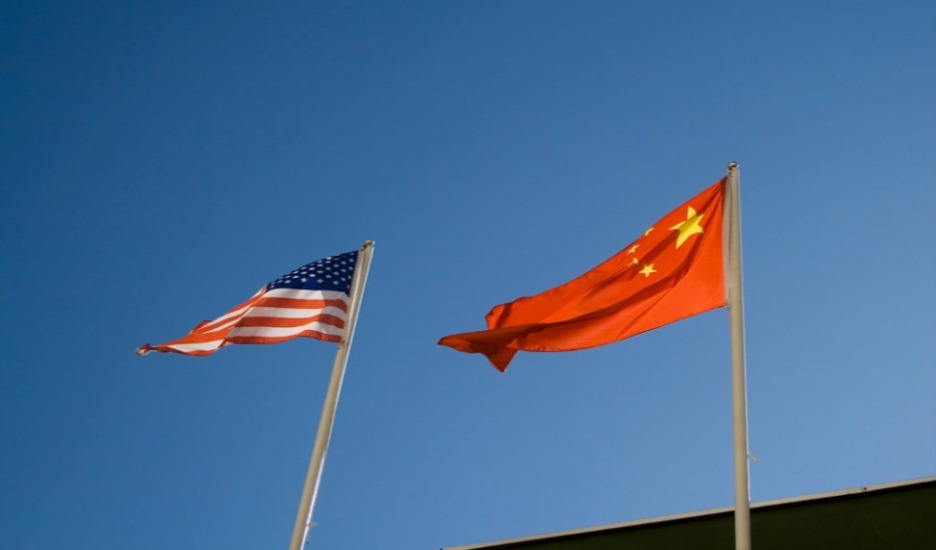Trump Looks for A Way Out of Syria
Trump Wants Plans to Leave Syria
Published by The Lawfare Institute
in Cooperation With

Trump Wants Plans to Leave Syria
President Donald Trump is once again sending mixed signals about U.S. policy in Syria. Last Thursday, in a wide-ranging speech in Ohio, Trump said that U.S. forces are “knocking the hell out of ISIS” and would withdraw from the country shortly. “We’ll be coming out of Syria, like, very soon,” he said. “Let the other people take care of it now.” The following day, the Wall Street Journal reported that Trump had recently frozen $200 million allocated by the State Department for reconstruction in Syria after reading a news article about the funds. The money had been pledged by Secretary of State Rex Tillerson at a conference in Kuwait in February. The Washington Post reports that “Trump has requested pullout plans and has had conversations with Chief of Staff John F. Kelly and Defense Secretary Jim Mattis about the matter, in which they have offered reassurances that the United States will not have to stay in the country forever.” One adminitration official told the Post that Trump's comments were “premature” and U.S. withdrawal from Syria could take more than a year.
U.S. troops remain in harm’s way in eastern Syria. Two soldiers—one American, the other British—were killed by an improvised bomb in Manbij last Thursday, shortly after Trump’s speech. U.S. officials are expected to meet to discuss U.S. policy in Syria later today, but CNN reported this morning that officials are considering sending “dozens” more troops to Syria. U.S. troops in the flashpoint city of Manbij are reportedly also bringing in new reinforcements and building fortifications amid recent tensions with Turkish-backed forces, according to Turkey’s Andolu Agency.
Trump had previously commented in February, in a meeting with Australian Prime Minister Alastair Campbell, that the U.S. goal in Syria is “get rid of ISIS and go home,” and his recent remarks reflect months of frustration with advisors who have advocated a longer-term mission. Among them was Tillerson, fired last month, who laid out an expansive agenda for the U.S. mission in January that even included resolving “the underlying conflict between the Syrian people and the Assad regime.” Tillerson’s ambitious policy was quickly checked by Mattis, who clarified, “We’ve been very clear that we’re not there to in any way engage with the regime, we’re not there to engage with Iran. … We’re there to defeat ISIS.”
Despite the departure of Tillerson and national security adviser H.R. McMaster, an ally on the issue, other prominent administration officials have continued to press for an open-ended engagement, at least in eastern Syria where U.S. forces are bolstering local forces that helped push out the Islamic State and are now facing pressure from Turkish-backed forces to the northwest and Russian- and regime-backed forces farther south. Both Tillerson and McMaster’s replacements, Mike Pompeo and John Bolton, have pressed for a more assertive U.S. role in Syria to confront Iranian interests there, and Mattis has said a continued U.S. presence is necessary. U.S. allies have also responded to Trump’s comments about withdrawal with concern. Saudi Crown Prince Mohammed bin Salman, still on his big trip across the United States, told Time on Thursday that Saudi officials “believe American troops should stay for at least the mid-term, if not the long-term,” citing the threat of a potential Iranian land corridor to the Mediterranean should the U.S. withdraw. The Jerusalem Post reports that Israeli officials have relayed similar objections privately to the Trump administration.
Fifteen Palestinians Killed in Land Day Protest on Gaza Border
A protest along the border between Israel and the Gaza Strip turned violent on Friday. Palestinian activists supported by Hamas had planned rallies in observance of Land Day, which commemorates the expropriation of Palestinian land in Israel’s 1976 expansion of settlements in the Galilee. Plans this year included a six-week sit-in along the Gaza border, lasting until the May 15 commemoration of the Naqba, the Arab defeat in Israel’s war of independence in 1948. Recent incidents in the area put Israeli forces on edge: Four Israeli soldiers were wounded by an improvised bomb placed by the border fence in February, and in recent weeks Palestinians armed with knives and grenades have snuck across the border and attacked military vehicles. A week before the demonstration, Hamas conducted a military drill that triggered Israel’s Iron Dome missile defense system. Israeli officials expressed concerns that militants could exploit the protests, and the Israeli military took precautions in the area, including bulldozing berms along the border near planned encampments and deploying more than 100 snipers to the area. The IDF also dropped leaflets in the area warning that Palestinians who came within 300 meters of the border would be shot.
On Friday, Israeli forces opened fire on some of the more than 30,000 protesters. At least 15 Palestinians were killed; another 758 were wounded by live ammunition and more than 1,400 were wounded in total, including from rubber bullets and tear gas inhalation. Another 49 protesters were wounded on Saturday. Israeli officials said they were responding to “rioting” and only fired on protesters who approached the border to throw stones and molotov cocktails, and Hamas has said that five of the dead were members of its military wing. But video of the protests also show an unarmed 19-year-old Palestinian, Abdul Fattah Abdul Nabi, being shot in the back of the head while running away from the border “a few hundred meters away from the fence.” The Post reports that Friday was the bloodiest day in Gaza since Operation Protective Edge in 2014, and a spokesman for Hamas’ Ministry of Health in Gaza told the Guardian that hospitals were running low on several blood types.
Human rights groups have criticized Israel for firing live ammunition at unarmed civilians, and U.N. Secretary General Antonio Guterres called on Friday for “an independent and transparent investigation” into the violence. The IDF has defended its actions, saying that it was responding with directed fire at people trying to break through the fence and that Hamas was “cynically exploiting women and children [by] sending them to the security fence and endangering their lives.” Israeli Ambassador to the U.N. Danny Danon called the protests “a well-organised and violent terror-gathering,” while his Palestinian counterpart called on the U.N. Security Council to act. Protests have largely dissipated since the bloodshed on Friday.
Sisi’s Stage-Managed Election Produces Predictable Result
The final results of the Egyptian election were announced yesterday, though the outcome was never in doubt. After intimidating any potential competitors out of the race and bolstering his support with bribes and a government-backed get-out-the-vote campaign, the incumbent, President Abdel-Fattah el-Sissi, easily coasted to victory with 21.8 million votes. The only other candidate on the ballot, a no-name politician who had previously declared his support for Sissi, received almost no support; the 656,534 votes for Moussa Mostafa Moussa was dwarfed by votes for the unspoken third candidate, public frustration. Nearly two million Egyptians cast spoiled or inadmissible ballots, comprising an uncounted 7 percent of the vote.
But for an election that became a referendum on Sissi’s first term, the results were disappointing. Only 41 percent of eligible voters came out to the polls over the three-day voting period, compared to the 47 percent turnout for Sisi’s election in 2014. “I thought I would be excited for these elections, seven years after the January revolution, but I am surely not,” Shams El Dine, a 28-year-old engineer, told the Post. “Why would I vote in an election where two candidates were jailed, another two were intimidated and while thousands of opponents are jailed?”
Sisi has been congratulated on his electoral victory by several world leaders. Russian President Vladimir Putin did not wait for the official results to be announced on Monday to offer his congratulations, and Saudi Arabia’s King Salman said yesterday that Sissi has won popular support for his counterterrorism policies. President Trump called Sissi on Monday; during the call he congratulated the Egyptian president and “affirmed the strategic partnership between the United States and Egypt,” the White House said. The State Department struck a somewhat different note in its own statement, which in addition to promising to work together with Sissi’s government, also mentioned “reports of constraints on freedoms of expression and association in the run-up to the elections” and “the importance of the protection of human rights and the vital role of civil society in Egypt.”
That repression continues. In the days before the election, Egyptian authorities cracked down on the foreign press, deporting Times of London correspondent Bel Trew and threatening to detain any other reporters whose dispatches were deemed “non-professional.” Lauren Bohn, reporting for the New Yorker, caught up with human rights activists and former revolutionaries in Cairo recently. “This time is more difficult than Mubarak’s,” Ahmed Maher told her. “I cannot say if [things in Egypt] will be worse or better, but I don’t think it will be better.” Another activist, lawyer Mahinour El-Masry, told her that the Trump administration’s support enables Sissi’s abuses. “Sisi will never stop,” she told Bohn, “especially with someone like Trump in power.”


.jpg?sfvrsn=5a43131e_9)


